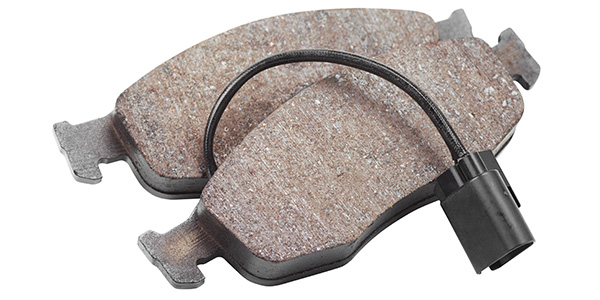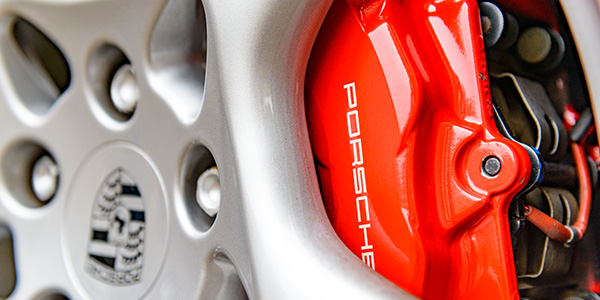Sensing Brake Pad Wear

On most Asian imports and domestic vehicles, the brake pad wear sensor was just a piece of bent sheet metal that would make contact with the rotor when the brake pad was worn past minimum specifications. It works only if the “squealer” can stay on the brake pad and if the driver knows what the squealing means. But with today’s well-insulated vehicles and air conditioning, the driver does not notice until grinding and pedal feedback are present.
Most luxury European vehicle owners do not want to find out they need new brake pads because of obnoxious grinding. On most high-end German imports, there are brake pad wear sensors that alert the driver with a light and warning on the dash. These vehicles use a loop of wire embedded in the friction material. The loop is set in the last 3 mm to 5 mm of pad material or the sensor is set in plastic and attached to the backing plate. When the pads wear down, the loop is broken. This triggers a change in resistance that causes the warning.
Brake pad wear sensors have been around for more than 40 years. But, in the past decade, they have evolved so that brake wear can be estimated. This has allowed drivers to pick the right time to have their brake pads replaced.
Old School
Most older brake pad wear systems had a sensor at each corner of the vehicle on the inboard pad. These systems can vary in the number of wheels that have sensors and where the placement is on the pads. Since the 1970s, they have been just a loop of wire with a small amount of current running through them.
On these older systems, the sensor itself had a known resistance value. When the resistance exceeded 2,000 ohms, a rectifier circuit in the instrument cluster sensed it as an open circuit and turned on the light. The most common failure for these types of circuits was physical damage and corrosion at the connector. This is why it is recommended that the sensor be replaced even if it has not come into contact with the brake rotor.
